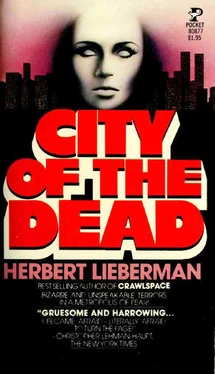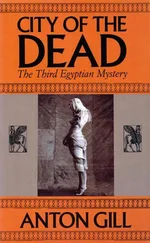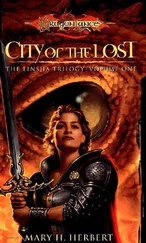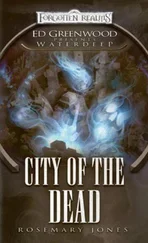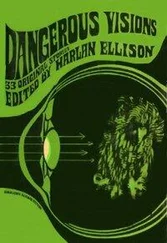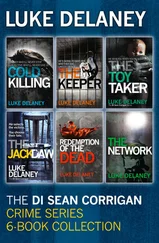“That’s right. She’s calling from some phone booth outside.”
“Then she may as well be calling from the moon. We’re never going to find her.”
“Come on, Paul—for Chrissake.” Haggard flings the birthday card down on the desktop. “That isn’t postmarked the moon. Grand Central Station isn’t the goddamned moon. That kid’s right here. In this city. Around the corner, for all I know.”
“If she’s not calling from some fixed address, some permanent base of operations, what the hell do we need this disgusting little tracing device for?”
“Because,” the detective groans wearily, “it gives us a pattern of her movements.”
“When you’re lucky enough to get a reading, before she rings off.”
“I tell you, this kid wants us to find her. How come she calls you here, knowing all the while we got a tracer on your phone?”
The question brings Konig up sharply. His fingers plow his hair exasperatedly.
“Answer me, Paul. How come? You can’t answer because you know it’s true. She wants us to get a reading on her.”
“Baloney.”
“We got two, didn’t we?”
“Two out of six—quite a pattern.”
“One, a phone booth at First Avenue and East Houston. Another, a luncheonette on Astor Place. That’s a pattern, isn’t it?”
“The East Village from First Avenue and East Houston to Astor Place?” Konig laughs scornfully. “It might as well be Bulgaria.”
“Okay. It is pretty feeble. But it’s a pattern. The next reading we get we can triangulate—narrow down. And I gotta feeling this kid’s gonna be calling more often now the warm weather’s coming. I gotta feeling she’s getting a little homesick out there. And the more she calls, the better our chances to zero in. We got descriptions—DD13’s and DD26’s—out in every borough and precinct, every station house knows ‘Konig, Lauren. Age twenty-two.’ They got pictures of her on the walls. You happen to be luckier than most They know it’s the Chiefs kid. They’re keeping it very quiet, but they’re all out there looking. So I say the tracing device stays.”
“It goes,” Konig shouts and flings a fist in the air. “And you can goddamn well go too.”
“Fine. Delighted. As of now, this minute, I’m off the case.”
“Fine with me too. I can do a helluva lot better by myself.”
“Help yourself, pal.”
“Thanks. I will.” Konig whirls around and starts out.
“A pleasure to do business with you. Happy birthday.”
The door slams. A picture slides on the shuddering wall, shatters in a heap on the floor. Moments after Konig’s departure, the dusty, warm air is still reverberating from the sharp concussion.
Haggard sits quietly in the warm, slanting sunbeams of the dying afternoon, the steely blue eyes still pondering the tidy 6″ x 9″ form.
Konig, Lauren. Age 22… Ht 5′ 6″… Medium build. Hair light brown. Eyes blue. Light complected. Freckles on nose and cheeks. Two vaccination marks upper left arm.
Scars: Thin white pencil-line scar above right eyebrow. Appendectomy scar, approximately thirteen years old.
Distinguishing marks: Small, dark mole, left cheekbone. Raspberry mole, right scapula. May have scar on back of left hand from…
In the next moment he swivels round in his chair and reaches into the inside pocket of his jacket draped across the top of a dusty file cabinet. From the pocket he withdraws a crumpled yellow sheet of paper, a police teletype, dated that day.
SUBJECT—DD26. Apr. 12, 1974. Female, white, age 22-25, resembling attached photo, your description, DD26, Dec. 14, 1973, observed walking small dog, black-and-white markings, vicinity Houston and Varick Streets. Believed residing loft-warehouse residence—324 Varick—under assumed name Emily Winslow. First called our attention by local residents that neighborhood complaining of activities of quasi paramilitary group operating in area and describing themselves as the “New World Militia”—NWM. Subject has been observed several times in company of members of this group. Though not suspected of any criminal activity, subject under surveillance past three days as per your instructions. Now checking work records, Social Security, and FBI files—Emily Winslow.
Kindly advise.
Sgt. Leo Wershba 17 Precinct NYPD
The detective’s eyes linger for several moments over the crumpled sheet of teletype. After a moment longer, he crushes the paper slowly in his fist. The squealing swivel action of his chair rotates him a full 180 degrees until once more the sun is at his back, and he is facing his desk, reaching for the phone.
4:45 p.m. Toxicology Lab.
Alembics. Beakers. Flasks. Bubbling distillers. Cardboard tubs of brain and liver, kidney and stomach. Plastic bags of blood and urine; jars of feces, vomitus, gastric remains. Envelopes of hair, fingernails, mucosa, nail scrapings. The high whir of electric blenders liquefying brains and livers soon to pass through boiling alembics and gas chromatographs, the distillates then to be analyzed for traces of alcohol, morphia, barbiturates, hypnotics, amphetamines, hydrocyanic acid gases, potassium cyanide, ethyl chloride, phosgene, cyclopropane, ethylene, Avertin; all the common phenol derivative acids—nitric, muriatic, sulfuric, oxalic, carbolic; the metallic poisons—arsenicals, lead arsenate, calcium arsenate, acetoarsenite of copper, arsensic trioxide, known as ratsbane. Bichloride of mercury. Lead. Antimony. Phosphorus. Bismuth. Thallium. Strychnine. Nicotine. The belladonnas, or the “three dream sisters”—atropine, scopolamine, hyoscine. The opium derivatives—morphine, heroin, codeine, papaverine, paregoric, laudanum. The hypnotics—chloral hydrate and paraldehyde, and the barbituric acid group—barbital, Nembutal, Amytal, Ipral, phenobarbital, Seconal. The “flying drugs”—speed, Benzedrine, Dexedrine, caffeine. The hallucinatory, lysergic acid. Then marijuana (hashish), the alkaloid, cocaine—and most deadly of all, aconite, known also as monkshood or wolfsbane.
Konig sits opposite Dr. Ozokawa, the Chief Toxicologist, in a miasmic fog of uric acid fumes wafting fitfully out of the chromatography laboratory next door, where several hundred beakers of the urine of expired people boil through various stages of analysis. The ammoniacal level in the air is so high that it causes tearing of the eyes and a burning sensation in the nostrils.
Hunched over, in shirt sleeves, Konig and Ozokawa sit in this poisonous air corroborating toxicological data with autopsy findings. They sit like old friends trading bits of gossip-—Ozokawa’s strychnine for Konig’s convulsions; Ozokawa’s hyoscine for Konig’s dilated pupils; Ozokawa’s cyanide for Konig’s mouth froth; Ozokawa’s arsensic for Konig’s ulceration of the small intestine; Ozokawa’s barbiturates for Konig’s cyanosis and respiratory arrest.
They chat easily of the facial discolorations found in strychnine, aniline, and nitrobenzene poisonings; of the cherry-red flush of carbon monoxide and cyanide poisoning; of the dilated pupils of scopolamine, the pinpoint pupils of heroin, the emaciation of metal poisonings, the ghastly burns of corrosive acids, the peach-pit odor of cyanide, the garlic odor of oxalic acid.
Ozokawa’s voice drones on through the dying afternoon, his clipped, percussive pronunciation struggling for clarity. “Evans, Rebecca. Age nineteen. DOA. Morphine, two milligrams in blood, urine, brain, and vomitus. Whittaker, Otis. Age thirteen. DOA. Morphine, three milligrams in urine, brain, and feces. Perriguex, Willi. Age fourteen months. Lead—” Ozokawa glances up from the small white 6″ x 9″ file card, sun flashing through his lenses. “You find no external signs of abuse on the child?”
Читать дальше
